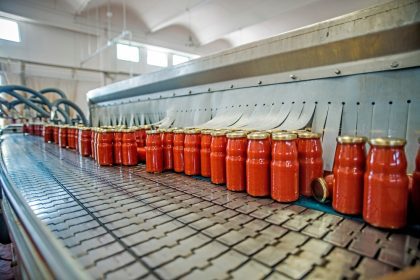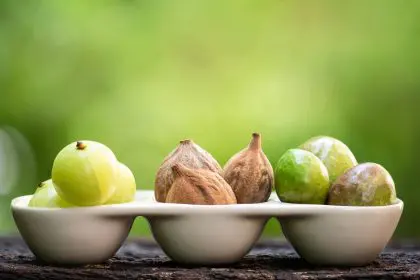That refreshing ice-cold smoothie or salad straight from the fridge might be your go-to healthy meal, but what if it’s actually working against your digestive goals? While we’ve all been taught to focus on what we eat, we rarely consider how the temperature of our food might be affecting our gut’s ability to properly process it. Turns out, those chilled foods might be forcing your digestive system to work overtime with underwhelming results.
Think about it – your body naturally runs at a warm 98.6°F. Your digestive system is essentially a series of chemical reactions, and just like the chemistry experiments you did in school, these reactions work best at certain temperatures. When you introduce ice-cold foods into this carefully balanced system, you’re essentially throwing a wrench into an otherwise well-oiled machine.
What happens to your stomach when cold hits
When you swallow that first spoonful of ice cream or sip of iced coffee, your digestive system experiences something akin to a mini shock. Your stomach is primed to work at body temperature, with digestive enzymes that function optimally in this warm environment.
Cold foods force your body to divert energy away from actual digestion and toward warming up the food instead. Think of it as your body needing to thaw out your meal before the real digestive work can even begin. This warming process can take up to an hour for particularly cold foods, meaning your digestion is essentially paused until the temperature equalizes.
Even more surprising is what happens to your stomach’s physical capabilities when cold hits. The muscles that churn and mix your food actually contract in response to cold, temporarily slowing down the mechanical aspect of digestion. This combination of delayed enzyme activity and reduced muscular action creates the perfect storm for sluggish digestion.
Many people who regularly experience bloating after meals don’t realize that their food choices might not be the culprit – it could simply be the temperature at which they’re consuming them.
The surprising connection between cold foods and nutrient absorption
It’s not just about how quickly food moves through your system – temperature also affects how well you absorb the nutrients from your meals. Cold foods can temporarily constrict blood vessels in your digestive tract, reducing blood flow to the very areas responsible for nutrient absorption.
Think of your intestinal lining as a busy transit hub where nutrients are transferred from your digestive system into your bloodstream. When blood vessels constrict due to cold foods, this transfer process becomes less efficient. You might be eating nutrient-dense foods, but your body can’t fully utilize what you’re providing.
This explains why some people feel less satisfied after cold meals, even when those meals contain plenty of calories and nutrients. Your body simply isn’t able to access everything you’re eating when the digestive process is compromised by temperature.
For anyone focusing on nutritional optimization – whether athletes looking to maximize recovery or individuals addressing nutritional deficiencies – this temperature effect could be undermining otherwise careful dietary choices.
How your ancient body responds to modern cold foods
Our bodies haven’t evolved much since our ancestors were hunting and gathering, long before refrigeration existed. From an evolutionary perspective, our digestive systems are designed to process foods at roughly the temperature at which they were found in nature.
Most naturally occurring foods would have been consumed at ambient temperature or warmed by cooking. Ice-cold smoothies, frozen desserts, and refrigerated beverages are relatively new inventions that our digestive systems haven’t fully adapted to processing efficiently.
Your body responds to very cold foods as potential stressors, triggering a mild protective response that includes reduced blood flow to digestive organs as blood is redirected to vital organs. This stress response further complicates the digestive process and can contribute to that heavy feeling after consuming cold foods.
Understanding this evolutionary mismatch helps explain why traditional dietary wisdom across numerous cultures emphasizes the importance of warm foods and avoiding extremely cold foods, especially for individuals with digestive complaints.
The cold truth about digestive enzymes
Digestive enzymes are the unsung heroes of your gut, breaking down proteins, fats, and carbohydrates into absorbable forms. These microscopic workers function like specialized keys, unlocking nutrients from food – but they’re extremely temperature-sensitive.
When food enters your system at cold temperatures, enzyme activity slows dramatically. Some estimates suggest that the activity of key digestive enzymes can drop by up to 50% when working at lower-than-optimal temperatures. This means your body needs to produce more enzymes to achieve the same digestive result.
For people with already compromised digestive enzyme production – which becomes increasingly common as we age – cold foods can push an already challenged system over the edge, resulting in more noticeable digestive discomfort and inefficiency.
Even if you take digestive enzyme supplements, consuming very cold foods can render them less effective, as the supplements are designed to work at body temperature. This creates a situation where you might be investing in digestive support that can’t function properly due to temperature interference.
Why some people feel the cold food effect more than others
If you’ve noticed that your friend can down an icy beverage without issue while you feel bloated and uncomfortable afterward, you’re observing a real biological difference. People vary considerably in their digestive response to cold foods based on several factors.
Those with stronger “digestive fire” – essentially more robust enzymatic activity and better circulation to digestive organs – can overcome the cold food challenge more easily. This digestive strength is partly genetic but also influenced by overall health, stress levels, and dietary history.
People with certain constitutional types, as recognized in traditional medicine systems like Ayurveda, are particularly sensitive to cold foods. If you tend to have cold hands and feet, feel worse in cold weather, or generally prefer warm environments, you might be especially susceptible to the digestive-slowing effects of cold foods.
Age also plays a significant role. Children and younger adults typically have more vigorous digestive capacity and can often handle temperature extremes better than older adults, whose enzyme production and digestive strength naturally decline with age.
The smoothie dilemma solved
Smoothies present a particular challenge – they’re often packed with nutritious ingredients but served at gut-challenging temperatures. The good news is you don’t have to abandon your favorite blended meal to support better digestion.
The simplest fix is to let your smoothie sit at room temperature for 10-15 minutes before drinking. This small temperature adjustment can make a significant difference in how your body processes the nutrients. You can also start with room temperature or slightly frozen rather than fully frozen ingredients.
Adding digestion-supporting warming ingredients can help counteract the cooling effect. Ginger, cinnamon, cardamom, and a pinch of black pepper all help stimulate digestive function and offset the chilling impact of cold foods. Even a small amount of these warming additions can make your smoothie more digestive-friendly.
Using room temperature liquid as your base rather than ice or frozen liquid creates a more moderate temperature profile while still producing a refreshing drink. This simple swap maintains the convenience factor while reducing the digestive burden.
Beyond smoothies – smart temperature adjustments for better digestion
Cold salads straight from the refrigerator can be just as challenging for your digestive system as frozen treats. Simply allowing salad ingredients to reach room temperature before eating can make a noticeable difference in how you feel afterward.
For those who love raw vegetables but find them difficult to digest, a light blanching can make them more digestible without sacrificing nutritional value. This brief heat exposure softens the fibers and warms the food just enough to remove the digestive chill factor.
With beverages, try to avoid adding ice to drinks you consume with meals. The concentrated cold can temporarily shut down digestive function more dramatically than the food itself. Room temperature or slightly cool beverages are far less likely to interfere with your meal’s digestion.
If you enjoy desserts like ice cream, having a small cup of warm tea beforehand or alongside can help balance the temperature impact and keep your digestion running more smoothly. The warm liquid helps maintain the optimal environment for digestive enzymes.
Seasonal eating for digestive harmony
Taking a cue from traditional wisdom, aligning your food temperatures with the seasons can help support optimal digestion year-round. This approach works with your body’s natural adjustments to environmental conditions.
During hot summer months, slightly cool foods can be refreshing without shocking your system. Your body is already warmer and better equipped to handle moderate temperature differences. This is the ideal time to enjoy raw salads, cooling fruits, and lightly chilled dishes.
As temperatures drop in fall and winter, gradually shifting toward warmer foods supports your body’s increased need for heat conservation. Soups, stews, and warm grain bowls provide both physical and digestive warmth when your body needs it most.
Morning digestion tends to be more sensitive regardless of season. Starting your day with warm or room temperature foods rather than cold breakfast options gives your digestive system a gentler awakening. Even something as simple as letting milk or yogurt come to room temperature before adding cereal can make a difference.
When cold foods might actually be beneficial
While warm foods generally support better digestion, there are specific situations where cold foods have their place. Understanding these exceptions helps you make strategic choices rather than blanket temperature rules.
During acute inflammatory conditions like certain types of gastritis or after dental surgery, cold foods can provide temporary relief by reducing blood flow and inflammation in the affected tissues. This is a therapeutic use rather than an everyday approach to eating.
For those engaging in intense physical activity in hot environments, cold foods and beverages can help prevent overheating while providing necessary hydration and nutrients. In this context, the cooling effect serves a specific purpose that outweighs potential digestive slowdown.
Certain digestive conditions characterized by excessive heat or acidity might benefit from the judicious use of cooling foods as part of a balanced approach. However, these should be incorporated thoughtfully, ideally with guidance from a healthcare provider familiar with your specific condition.
The temperature of your food isn’t just about taste preference or convenience – it plays a significant role in how efficiently your body can turn that food into usable nutrition. By making simple adjustments to how you prepare and consume foods, you might discover digestive comfort you didn’t know was possible. Sometimes the path to better gut health isn’t about changing what you eat, but simply changing how warm or cold it is when it hits your plate.
















